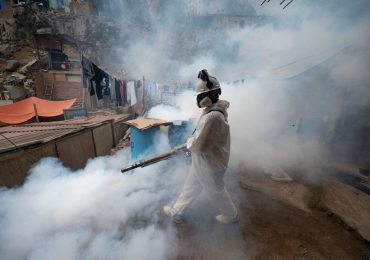Thomas Martin was studying parenting behavior among wild birds in Venezuela when a drought hit in 2008. In one species, the gray-breasted wood wren (Henicorhina leucophrys), the number of active nests in his team’s study area declined from 65 in 2007 to just 7 during the drought, the University of Montana wildlife biologist says.
Reproduction comes at a cost, because animals must expend energy producing and caring for their young, so Martin wondered what effect this temporary drop in reproduction might have on the adult birds’ survival rates. To find out, he set up another experiment in 2009, this one in the forests of Borneo. With then–graduate student James Mouton and their field assistants, Martin caught and banded birds, and began to record nest locations and bird sightings. Seven years later, a drought hit.
It wasn’t as severe as the one in Venezuela in 2008, where there was a more than 50 percent average reduction in nests across 18 species, and Martin suspects that’s why the effects he and his team saw in Borneo weren’t as extreme. Still, the 20 bird species studied in Borneo reduced the number of nests in which they laid eggs by an average of 36 percent compared with the year before. The level of reduction varied among species, with long-lived birds—those with average lifespans of about 10 or more years—reducing their reproduction the most. And in contrast to past studies that indicated that birds’ survival drops during droughts, survival rates increased in the species that were most inclined to hold off on having offspring.
“The contrast between long-lived and short-lived species in how they cope with a stressful environment is striking,” writes Rosemary Grant, an emeritus biologist at Princeton University who was not involved in the study, in an email to The Scientist. The research, she says, “provides a good example of the value of long-term studies.”
Leave a comment









